Nvidia's launching a new and... er... very generous small form factor GPU/chassis standard to simplify building your new mini rig
Though it does bear saying the standards are very generous, and enthusiast-focused, too, which has me wondering if we ought to be expecting powerful dual-slot GPUs in the next gen.
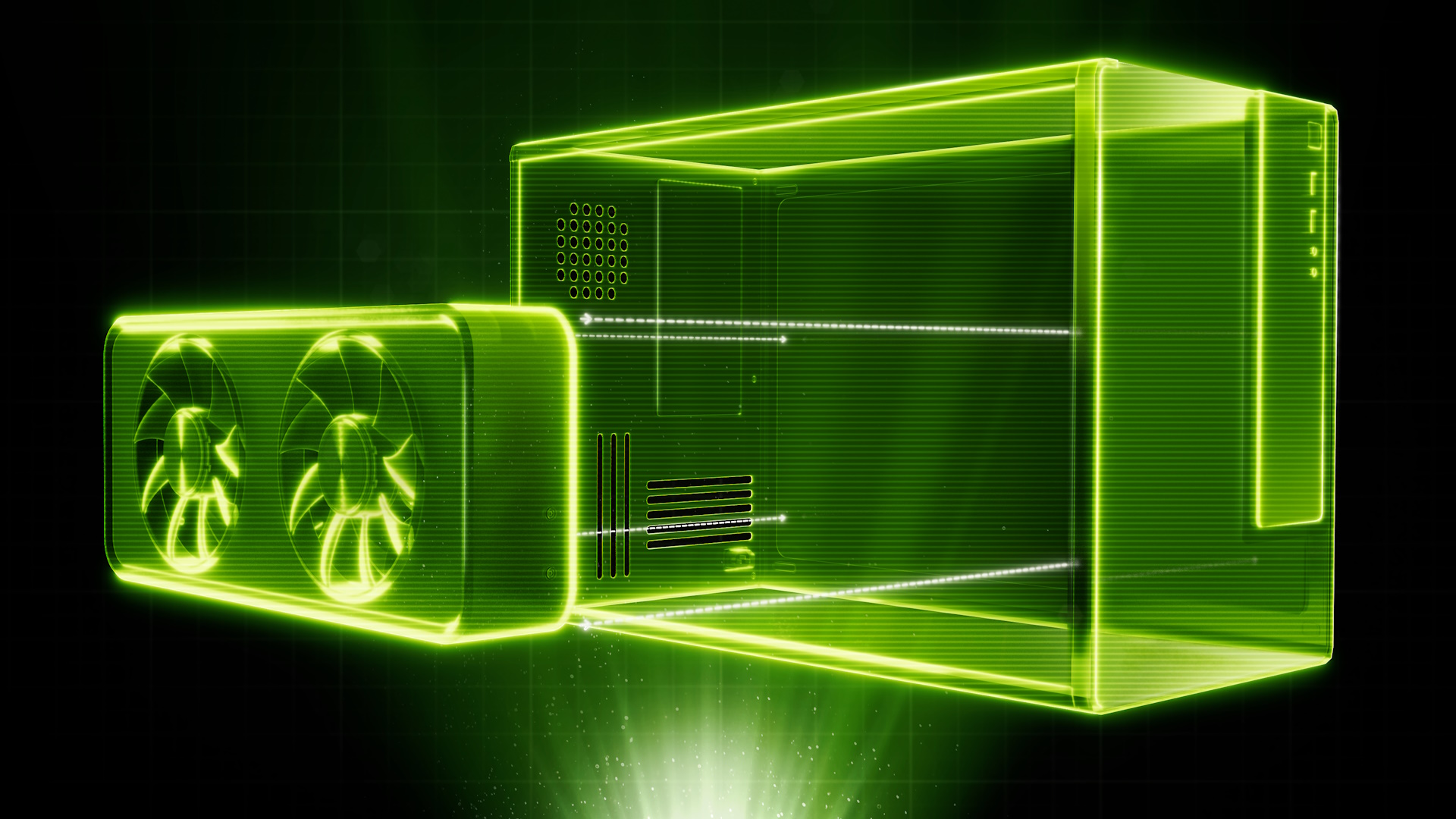
Nvidia's putting itself up as the new champion of small form factor graphics cards, with a new SFF-Ready Enthusiast Graphics Card spec. This is Nvidia attempting to set a pseudo industry standard for both small form factor GPUs and chassis. The idea is to give users a clear message of what graphics cards will fit comfortable inside which chassis.
Because, admittedly, right now that can be a bit of a nightmare. Not that it's impossible by any means, especially as so many chassis builders have specifically tweaked their case designs to cope with the ever more chonky graphics slabs people want to stick into ever smaller chassis.
But having to spend hours cross-referencing the specs sheets for both the prospective graphics card you're after and the chassis you want to build your ickle PC into, and then taking a ton of polaroids and pinning them to a cork board with string looped between, before having to dive into ever more complex algorithms… all just to make sure you can stick a decent GPU into your SFF chassis.
So, wouldn't just having to match up a couple of badges make things a load easier? Of course it would. Well, so long as you only wanted an Nvidia card, obviously.
The SFF-Ready Enthusiast Graphics Card guidelines, to be fair, are pretty generous. Your card and cooler can be up to 2.5 slots, 304 mm in length, and 151 mm in depth. Though to live up to the 'enthusiast' tag the cards need to be RTX 4070-level or higher. Then the chassis GPU volume needs to be a little larger—though still 2.5 slot—at 312 mm long and 154.5 mm deep.
As long as your card and case fit those guidelines you'll get a shiny new badge. I expect. I haven't actually seen the badge yet, but I bet it's shiny.
And wouldn't you know it, there are already a bunch of graphics cards and PC chassis that already make the grade. Even up to a hoofing great RTX 4080, would you believe? According to Nvidia's tape measure, there are 33 different GeForce cards that count as SFF-Ready Enthusiast Graphics Cards, and a grand total of 18 chassis from a bunch of different vendors that count.
The biggest gaming news, reviews and hardware deals
Keep up to date with the most important stories and the best deals, as picked by the PC Gamer team.
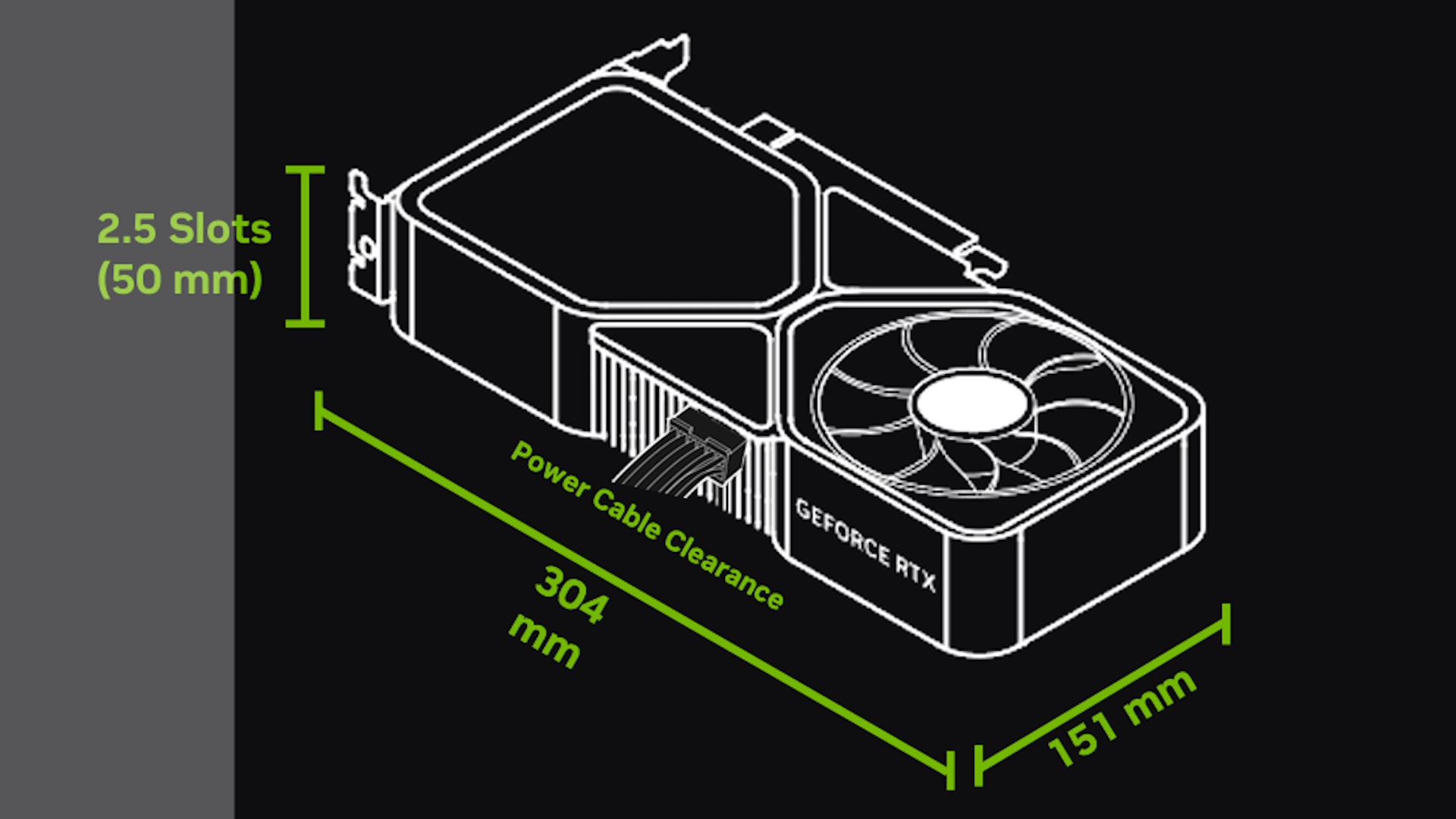
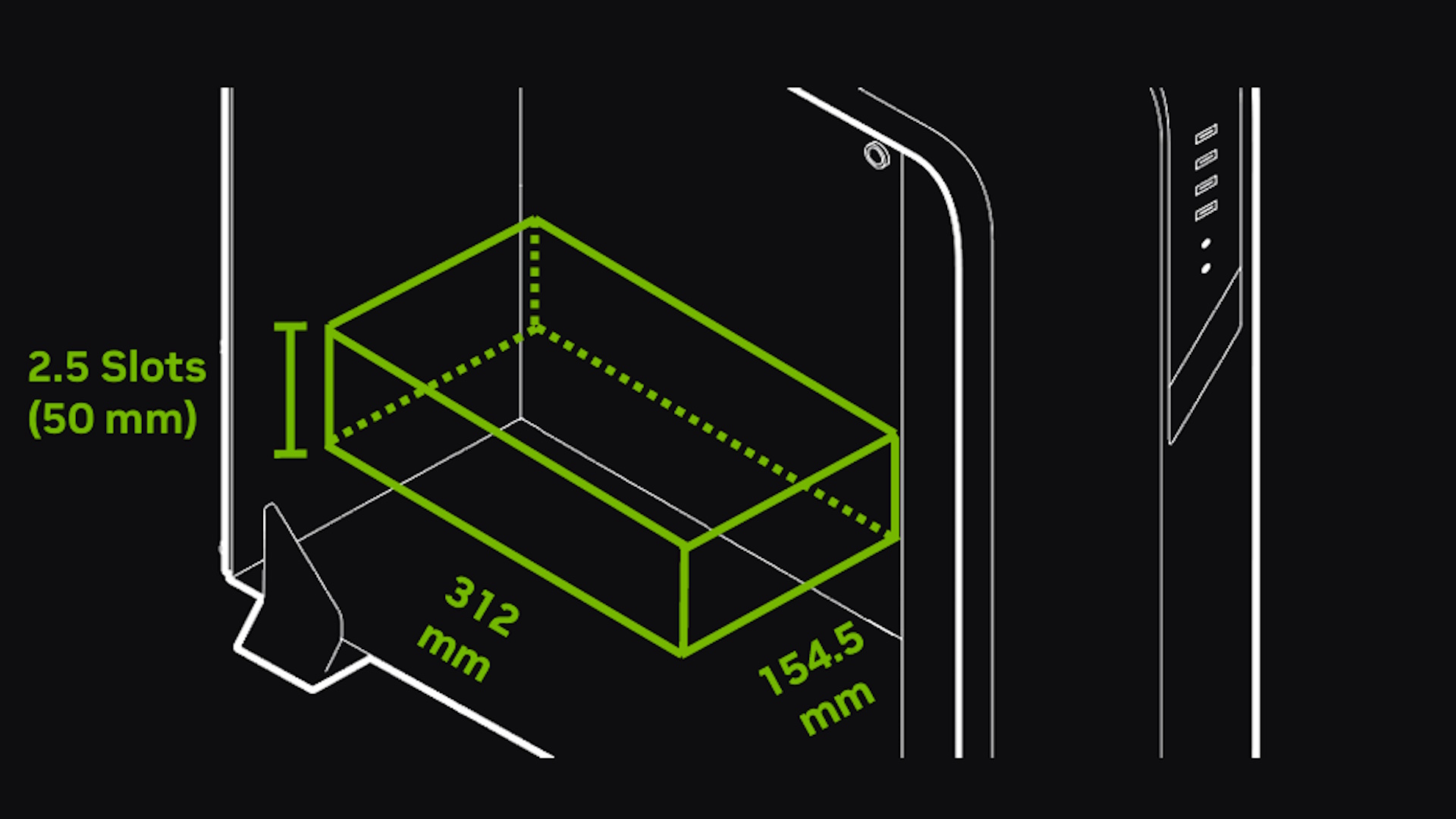
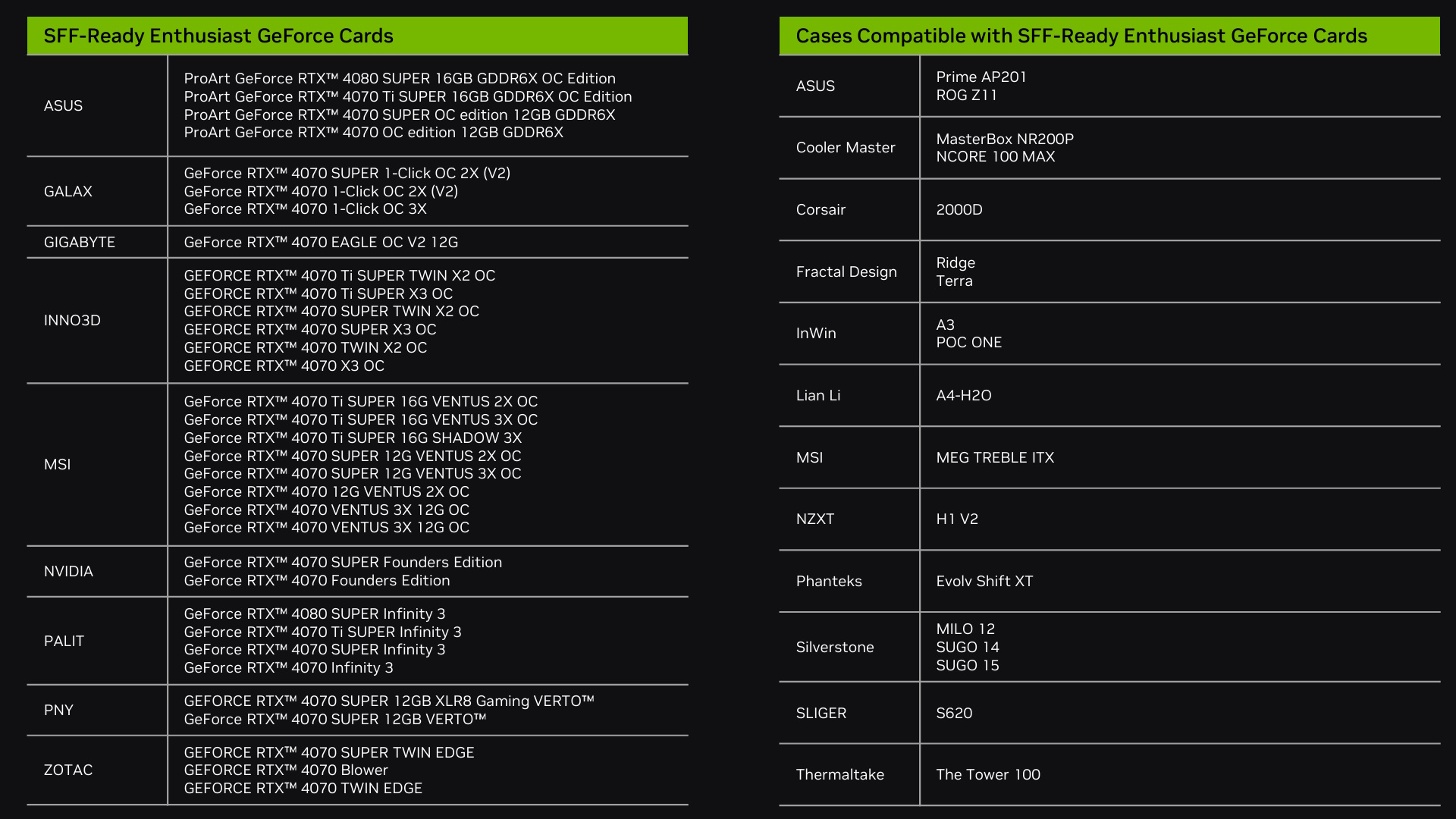
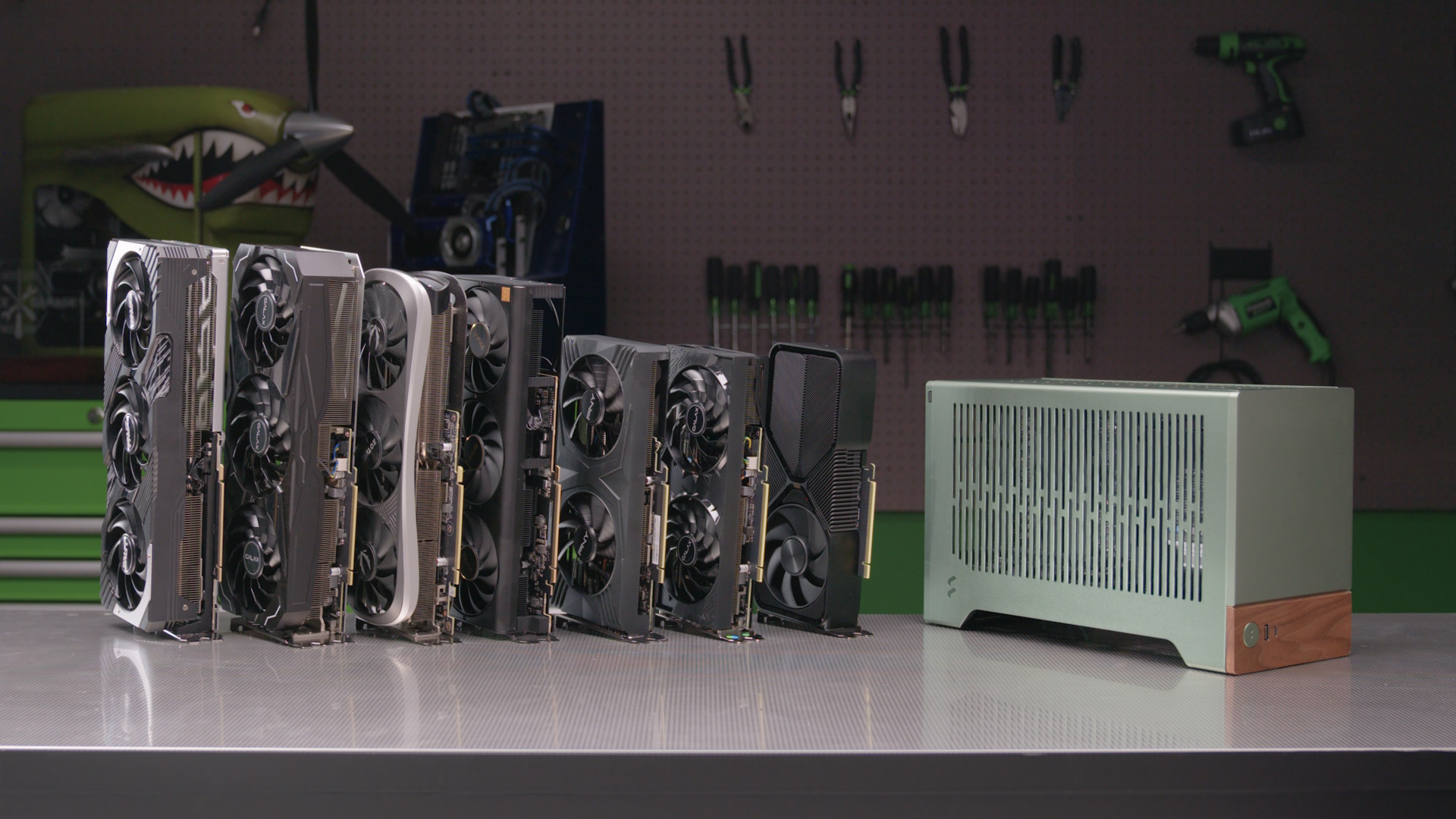

Best CPU for gaming: The top chips from Intel and AMD.
Best gaming motherboard: The right boards.
Best graphics card: Your perfect pixel-pusher awaits.
Best SSD for gaming: Get into the game ahead of the rest.
It's maybe not necessarily what most people would class as a small form factor given those generous GPU dimensions. Traditionally, you'd be either thinking of a slimmer card, or a half-height card, or even just a much shorter card as a small form factor graphics card.
Which is what makes this such an interesting push from Nvidia for me, especially with it specifically aiming it at the enthusiast market from the get-go. Which does make me wonder whether there might actually be some truth in that RTX 50-series rumour that suggests the RTX 5090 might actually be a dual-slot GPU and not the same sort of monster as the RTX 3090 or RTX 4090.
And if it is a dual-slotter, or even a 2.5 slot card, then the RTX 5090 would class as an SFF-Ready Enthusiast Graphics Card for sure. Of course that's predicated on it being less than the length of a cricket bat (look it up).

Dave has been gaming since the days of Zaxxon and Lady Bug on the Colecovision, and code books for the Commodore Vic 20 (Death Race 2000!). He built his first gaming PC at the tender age of 16, and finally finished bug-fixing the Cyrix-based system around a year later. When he dropped it out of the window. He first started writing for Official PlayStation Magazine and Xbox World many decades ago, then moved onto PC Format full-time, then PC Gamer, TechRadar, and T3 among others. Now he's back, writing about the nightmarish graphics card market, CPUs with more cores than sense, gaming laptops hotter than the sun, and SSDs more capacious than a Cybertruck.

